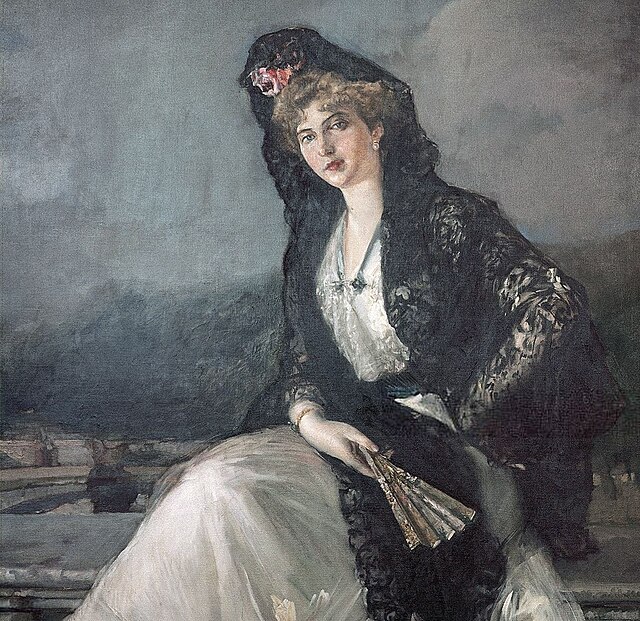The joyas de pasar are a historic collection of jewels, privately owned by the head of the Spanish royal family, to be worn by the Queen of Spain on solemn occasions. The initial jewellery set was gathered by Queen Victoria Eugenie, wife of King Alfonso XIII, and are transmitted to the next generation following the instructions that she left in her will. They are separate from the Regalia of Spain which is owned by the Spanish State.
Portrait of Queen Victoria Eugenie wearing the fleurs-de-lis tiara, the chaton necklace, and the earrings, as well as a shorter emerald necklace, by Christian Franzen (1922).
Portrait of Isabel II wearing the thirty-seven pearls necklace with La Peregrina II, by Federico de Madrazo (1850).
Portrait of Queen Victoria Eugenie wearing the fleurs-de-lis tiara, by José Moreno Carbonero (1912).
Portrait of Princess Frederica of Hanover wearing the Prussian tiara (c. 1930–36).
Victoria Eugenie of Battenberg
Victoria Eugenie of Battenberg was Queen of Spain as the wife of King Alfonso XIII from their marriage on 31 May 1906 until 14 April 1931, when the Spanish Second Republic was proclaimed. A Hessian princess by birth, she was a member of the Battenberg family, a morganatic branch of the House of Hesse-Darmstadt. She was the youngest granddaughter of Queen Victoria and Prince Albert. Unlike other members of the Battenberg family, who were accorded the lower rank of Serene Highness, Victoria Eugenie was born with the rank of Highness due to a Royal Warrant issued in 1886 by Queen Victoria.
Formal photo by Kaulak, c. 1910
Victoria Eugénie with her grandmother, Queen Victoria, 1897
Victoria Eugenie dressed in Castilian fashion, as painted by Joaquín Sorolla
c.1907








